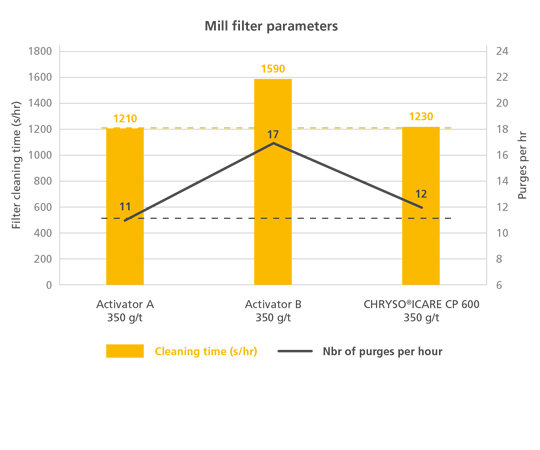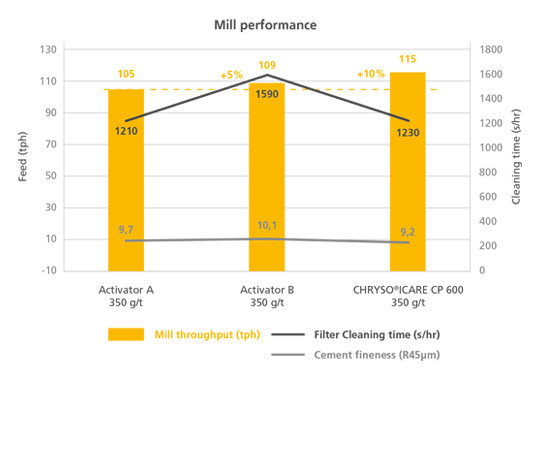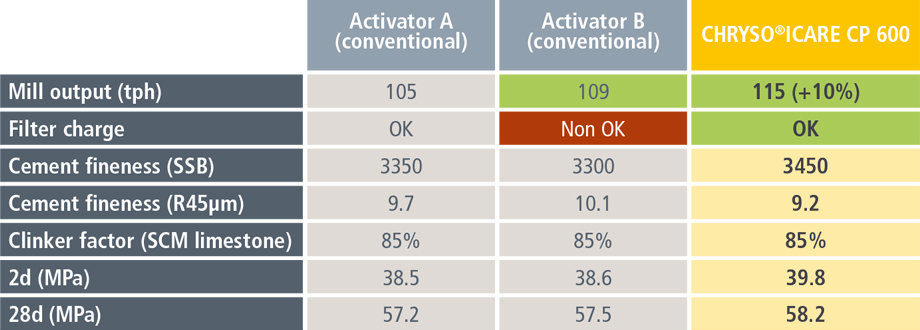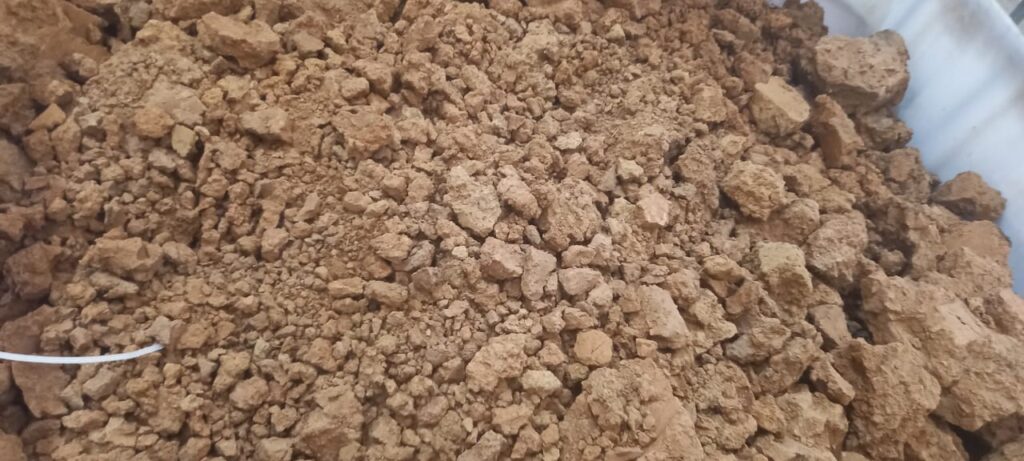OVERTAKING CEMENT GRINDING PROCESS LIMITATIONS TO REACH FULL CEMENT ACTIVATION POTENTIAL

The performance of conventional strength enhancers can be limited by different grinding process constraints. An example is given with a process design based on a combined high-pressure-roller-press with single chamber ball mill and 3rd generation separator. It is stressed a high process sensitivity with strength enhancers. This demonstrates the direct impact of too powerful strength enhancers on cement powder flowability and its handling all along grinding process.
Graph. 1 shows how the process efficiency can be impacted by the strength enhancer performance with regards to process configuration.

Graph. 1: process parameters and mill performance
As soon as the strength enhancer is added in the mill, despite its low dosage (200 g/t), its effect is highlighted with a drop of separator rejects. This gives the possibility to increase mill fresh feed to benefit fully from improved grinding efficiency. However, when dosage is increased to reach the optimum for chemical activation (> 350 g/t as pointed out with upstream lab tests), grinding efficiency keeps on improving (separator rejects drop and fresh feed up) but with dust charge peaking up (filter pressure and dust transfer). This leads to mill tripping off. In such a configuration, the strength enhancer cannot be used at its optimum dosage to get all the benefits for cement strength improvement.
CHRYSO®ICARE, a new patent-pending technology, has been designed to further improve the grinding process performance and cement reactivity. CHRYSO®ICARE empowers cement reactivity by creating a synergy effect between chemical and mechanical activation to increase cement strengths at all ages. Cement activation potential becomes fully accessible for many cement grinding processes with existing limitations.
Industrial comparison between conventional vs. CHRYSO®ICARE stresses the achievable added-value and benefits. In a ball mill closed circuit with first generation separator, different strength enhancers are compared (Table 1) with regards to grinding process performance.

Table 1: Strength enhancer positioning
Special attention is paid to bag filters (cleaning time and number of purges per hour) to maintain them in their operational zone without limiting any grinding steps. Collected data are unambiguous about filter performance with the different products (Graph. 2). With grinding effect increase through conventional products (Activator B), filter performance is negatively impacted with rise of cleaning time and number of purges per hour. This is not observed with the new CHRYSO®ICARE, filter parameters remaining under control. This is immediately converted into further mill performance through additional mill throughput (Graph. 3).


Process bottleneck (in this case, filter) is overtaken making possible to provide additional cement production (+10% vs. conventional solution) without compromising process equipment and cement compressive strengths (Table 2).

Table 2: Industrial comparison (quality) between conventional vs. new technology CHRYSO®ICARE CP 600
Despite optimum operational limits which are often achieved by cement plants, CHRYSO®ICARE patent-pending technology brings a new optimization lever particularly efficient to tackle technical and environmental challenges of the cement industry.
LAURENT GUILLOT – CHRYSO Cement Technical Director




